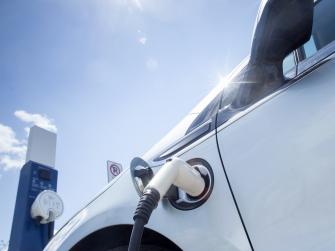Climate innovation blueprint
Aligning federal innovation budgets with climate goals

In this report, EDF shares recommendations to align the Department of Energy’s clean energy innovation priorities with progress on urgent climate goals.
While the Department of Energy funding has helped reduce the costs and improve the performance of several key climate technologies, resulting in huge economic and environmental benefits, the agency’s innovation priorities and budgets have not kept pace with the extraordinary challenges and opportunities in front of us.
Policymakers need to marshal the Department of Energy's innovation efforts toward beating the climate crisis -- and prioritize the technologies with the greatest potential to drive down emissions.
EDF teamed up with Evolved Energy Research to develop an analytical framework for assessing the emissions impact of potential breakthroughs in cost and performance across a set of clean energy technologies. We tested the impact of these breakthroughs under different scenarios of climate policy, including one stringent enough to achieve net-zero carbon emissions by 2050. These results offer a blueprint for aligning innovation budgets and priorities with U.S. climate targets for 2050. Our focus is on the research, development, and demonstration (RD&D) budget at DOE, including the applied energy programs, ARPA-E (Advanced Research Projects Agency–Energy), and clean energy activities within the Office of Science.
Our blueprint includes four key recommendations for Congress and Administration:
- To meet the scale of the climate crisis and make up for lost time, grow the clean energy research, development and demonstration (RD&D) budget at DOE to $32 billion by FY 2025.
- Rebalance the DOE portfolio to focus on technologies that cut the most cumulative emissions.
- Create new cross-cutting programs at in DOE that maximize 'complementary' technologies — those that can boost the deployment of other energy technologies.
- Update the formal mission of DOE’s energy and science offices to be focused on reducing greenhouse gases and other harmful pollution.
MEDIA CONTACT
Chandler Green
(803) 981-2211 (office)










